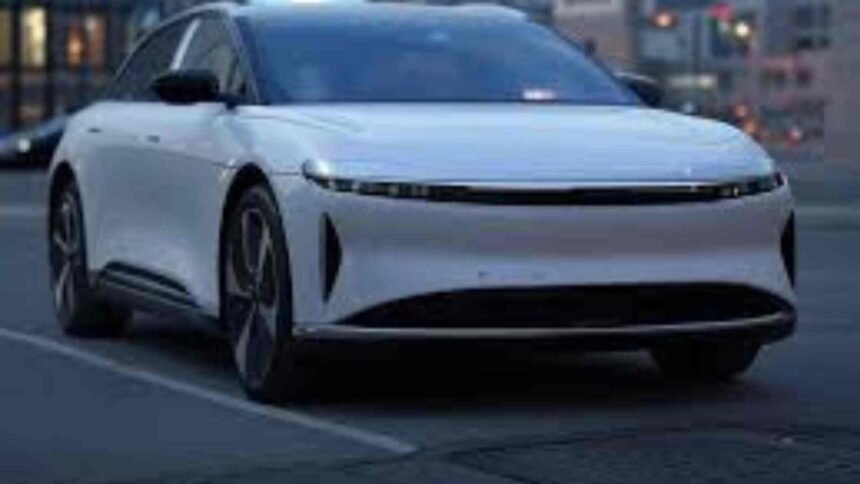Uber investment has officially shifted into overdrive. In a bold new play, ride‑hailing titan Uber is plowing $300 million into electric‑vehicle maker Lucid. Why? To help bankroll a futuristic Lucid robotaxi fleet powered by Nuro’s cutting‑edge Level 4 autonomous driving tech. The plan aims to deploy 20,000 self‑driving Lucid Gravity SUVs in a major U.S. city starting in late 2026. Here’s why this move is big news.
What’s the Deal?
Late on July 17, sources confirmed that Uber will invest $300 million directly into Lucid, according to Reuters. Under a broader agreement, Uber also commits to acquiring and deploying over 20,000 Lucid Gravity SUVs equipped with Nuro’s AV system over a six‑year span. A prototype robotaxi is already being tested at Nuro’s facility in Las Vegas .
Why It’s a Game-Changer
1. Uber investment scales its robotaxi ambitions
In 2020, Uber sold its in-house AV division. Now, through strategic partnerships with Waymo, Aurora, and now Lucid–Nuro, Uber is doubling down on autonomous mobility—without shouldering full R&D costs.
2. Lucid robotaxi gives EV strategy a boost
The $300 million cash infusion comes at a crucial time for Lucid, which needed capital to shift from luxury EVs to large‑scale fleet production. The deal lifted Lucid shares 26–40% in trading .
3. Nuro partnership sets the autonomy standard
Nuro, founded by ex-Waymo engineers, is providing Level 4 self-driving tech—vehicles can drive themselves in most conditions; no driver is needed. Uber has also secured a seat on Nuro’s board as part of the deal.
Timeline & Rollout
- Late 2026: The first robotaxis hit the streets of a major U.S. city—name TBD.
- 2026–2032: Gradual deployment of more than 20,000 Lucid Gravity SUVs.
- Prototype testing: Already underway at Nuro’s Las Vegas proving grounds.
Analyst Insights
- Mixed market reaction: Uber’s stock slid modestly post-announcement, while Lucid shares rose sharply—some analysts caution about. Bank of America even maintained a bearish outlook on Lucid despite the deal.
- Strategic fit: Supporters say Uber is taking a calculated gamble: “Any balance‑sheet risk … would likely be only temporary.”
- Competitive landscape: The robotaxi race is heating up—with Waymo, Tesla, and Zoox already rolling trials in select U.S. cities.
Regulatory & Technical Hurdles
- Licensing: Nuro must secure state‑level operational permits.
- Safety scrutiny: As the tech scales, Uber and partners will face tight oversight—past AV mishaps (e.g., Uber’s 2018 fatal crash) add pressure.
- Integration risks: Merging Nuro tech with Lucid’s hardware post‑assembly involves major systems engineering.
Strategic Implications
- Uber investment signals deep commitment to becoming a transport platform, not just a ride‑hailer.
- Lucid robotaxi helps reposition Lucid from a luxury-only EV maker to a key fleet supplier.
- The Nuro partnership underscores the tech shift: delivery‑focused Nuro broadens into passenger mobility.
Uber’s $300 million is more than just a check. it’s a signal: ride‑hailing is evolving into ride‑owning. If successful, the Lucid robotaxi fleet could redefine urban transport standards. Heavy competition remains, but the trio’s combined forces—Uber’s reach, Lucid’s EV hardware, and Nuro’s smart driving tech—could deliver real momentum. Watch closely as the first robotaxis roll out in 2026.






